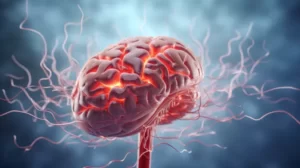The prevalence of brain-related health issues in the US is a staggering and alarming fact. However, what is more worrisome is the research from the University of Rochester that has uncovered a significant hazard to brain health in the air we breathe. Rapidly mounting evidence shows a connection between air pollution and autism, schizophrenia, and possibly other mental difficulties. This research shows that air pollution in young children stimulates the enlargement of a part of the brain that is over-developed in those with autism and schizophrenia.
These findings align with other studies that have indicated associations between air pollution and autism. When young children live in neighborhoods with extreme levels of air pollutants from cars and trucks, their risk of being autistic triple. Deborah Cory-Slechta, Ph.D., a professor of environmental medicine, warns that their findings add to the growing body of evidence that air pollution might play a role in autism, as well as in other neuro-developmental disorders.
Laboratory Experiments Unveil Startling Effects of Air Pollution
In laboratory tests involving animal subjects, air pollution, typical of big cities during rush hour, was found to instigate inflammation in the entire brain. The pollution also led to enlargement of brain locations called the lateral ventricles. These chambers, filled with cerebrospinal fluid and positioned on both sides of the brain, are typically enlarged in brain disorders like autism and schizophrenia.
Cory-Slechta explains, “When we looked closely at the ventricles, we could see that the white matter that normally surrounds them hadn’t fully developed. It appears that inflammation had damaged those brain cells and prevented that region of the brain from developing, and the ventricles simply expanded to fill the space.”
Air Pollution – A Threat to Public Health
It’s vital to note that most of the air pollution we encounter consists of carbon particles resulting from fuel consumed by cars, trucks, power plants, and factories. Originally, studies on air pollution’s effects examined its impact on the lungs. However, researchers have shifted their focus to how small particles known as ultrafine particles (currently unregulated by the EPA) are the most dangerous. These tiny particles are inhaled deep into the lungs and absorbed in the blood. They travel throughout the body and brain, producing toxic effects.
“I think these findings are going to raise new questions about whether the current regulatory standards for air quality are sufficient to protect our children,” says Cory-Slechta.
Possible Precautions and Measures
Although the evidence seems to point to a grim reality, there are measures that can be taken to reduce the risk of exposure to air pollution. Some include:
- Staying informed: Check local air quality reports regularly, especially on days when pollution levels are high.
- Minimizing outdoor activities: On days with poor air quality, reduce outdoor activities, especially during peak traffic hours.
- Choose cleaner transportation: Consider using public transportation, carpooling, biking, or walking instead of driving.
- Create a clean indoor environment: Use air purifiers, maintain adequate ventilation, and minimize the use of products that release harmful pollutants.
- Support organizations working to reduce pollution: Advocate for stricter regulations and support organizations working to decrease air pollution.
Summing Up
Current research has opened our eyes to the detrimental effects of air pollution, not only on our respiratory system but also on our brains. The connection between air pollution and neuro-developmental disorders such as autism and schizophrenia is a grave concern, particularly for our children who are most vulnerable. By remaining informed and taking appropriate precautions, we can minimize our risk of exposure to air pollution and help protect future generations from these potential health hazards.



